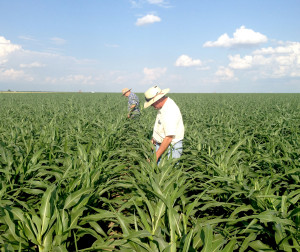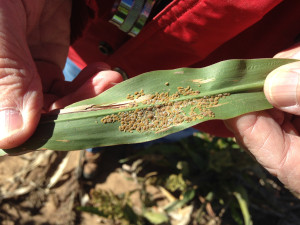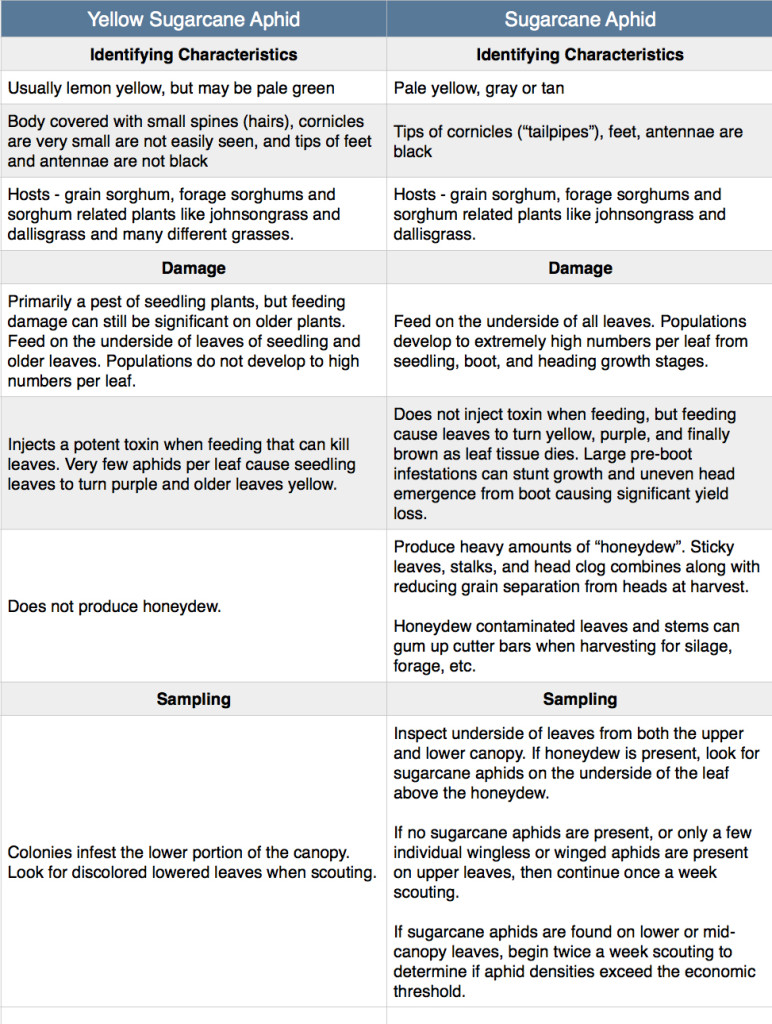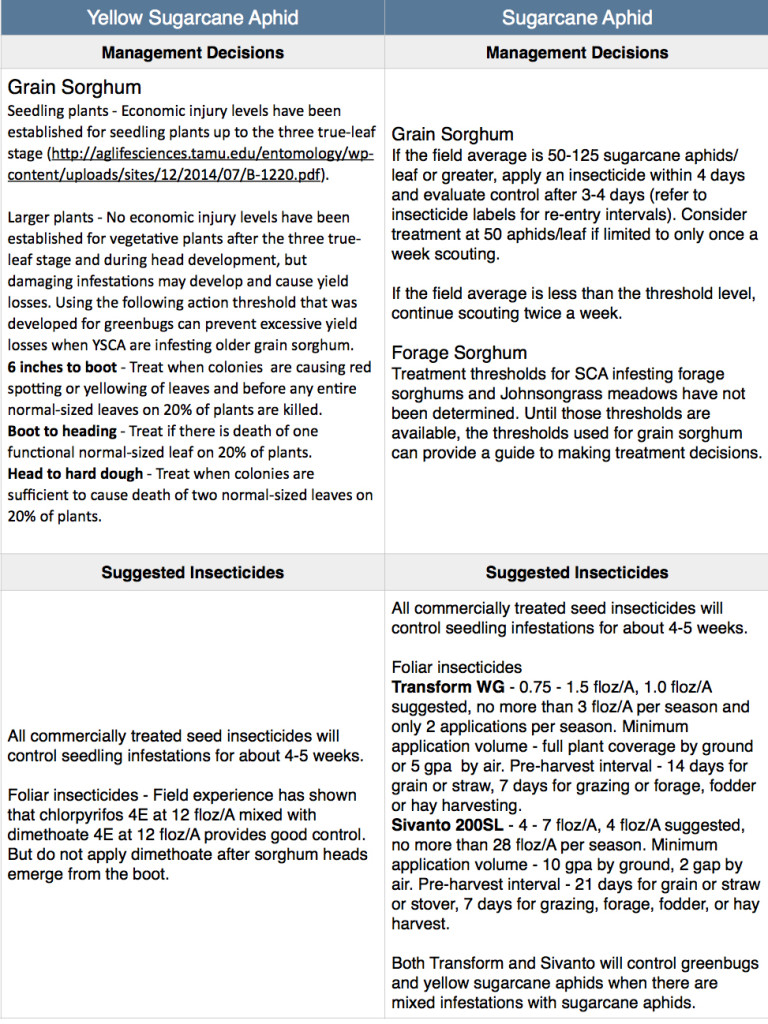It’s official, the sugarcane aphid has been found in the Texas Panhandle this year, but how widespread it is remains uncertain at this time, according to a Texas A&M AgriLife Extension Service specialist.

Producers in Carson County scout a sorghum field for sugarcane aphids. (Texas A&M AgriLife Extension Service photo by Dr. Ed Bynum)
Entomologist Dr. Ed Bynum said he has confirmed aphids found in Ochiltree County by AgriLife Extension agents Scott Strawn and J.R. Sprague are the sugarcane aphid, not the yellow sugarcane aphid. Additionally, they have been found in Carson and Donley counties.
“This is the first confirmed infestation this year in the Texas Panhandle,” Bynum said. “The infestation in Ochiltree was only in a localized area in the field and was below the treatment threshold. But we found at least one field in Donley County with levels above the treatment threshold, and we are getting more calls from other concerned producers. We will continue checking fields throughout the week.”
Bynum said the critical thing for producers at this time is to realize they need to have an active scouting program to determine which aphid they have and manage accordingly.
Updated information about the sugarcane aphid distribution, scouting procedures, treatment thresholds, insecticides and management options with other pests can be found at http://www.txscan.blogspot.com and http://www.texasinsects.org/sorghum.html.

Dr. Ed Bynum, Texas A&M AgriLife Extension Service entomologist in Amarillo, holds a sorghum leaf covered with sugarcane aphids. (Texas A&M AgriLife Extension Service photo)
“Initially, all fields will not be infested, but I’m concerned that we will be dealing with the sugarcane aphid infestations all across the Texas Panhandle.
“Since this is the first year for us to have the sugarcane aphid in damaging infestations, we are unsure of what to expect and how best to manage it,” he said. “What has been learned in southeast Texas, where sugarcane aphids have been a pest since 2013, is how to identify the aphid and thoroughly scout fields.
“If you find aphids in your field that are unfamiliar to you, collect a sample to be taken to the AgriLife Extension office or contact your county agent to collect a sample for species identification,” Bynum said.
Two weeks ago, sugarcane aphid infestations were confirmed at treatable levels in Floyd, Crosby and Lubbock counties. Also, infestations have been confirmed in Dawson, Hale, Hockley, Lamb, Swisher and Terry counties, he said.
Depending on when a field is infested, sugarcane aphids can reach damaging levels in five to 14 days.
“What has become evident is that there is confusion between these two aphids,” Bynum said. “It is important to know how to identify each of these pests because the insecticides and management options are different for the sugarcane aphid and the yellow sugarcane aphid.”
He said another concern he has been hearing is what to do when there are other pest infestations in the field as well.
“Our AgriLife Extension entomologists’ recommendations are to deal with the pest at the time that will limit yield the most and deal with other pests as they become an issue,” he said.

